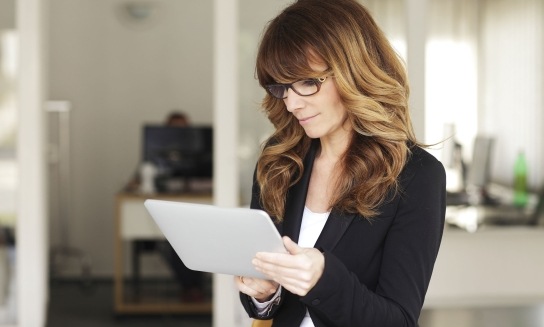Billing and Payments
It's easier and simpler to pay your
bills by Direct Debit
Relax. It's easier and simpler to pay your bills by Direct Debit.
Paying bills takes time, and time costs money. A Direct Debit saves you both by:
Reducing your workload - there's less admin.
Avoiding late payment interest charges - your bills are always paid on time.
Potential to save money with access to a wider range of contracts/ tariffs.
When you pay by Direct Debit, you are protected in three ways:
Just download the Direct Debit Instruction (DDI) form and email it to I&CRevManDDI@edfenergy.com.

Want to pay by BACS or CHAPS?
To pay your bills using either BACS (Bankers Automated Clearing System) or CHAPS (Clearing House Automated Payment System), you'll need to arrange the payment with your bank and give them the following details:
Account Name: EDF Energy Customers Ltd
Sort Code: 40-05-30
Account Number: 44151844
Bank: HSBC Bank plc, 60 Queen Street, London, EC4N 4TR
IBAN Number: GB25MIDL40053044151844
SWIFT Code: MIDLGB22
Let us know once you've arranged the transfer, email RemittanceAdvices@edfenergy.com quoting your EDF account number, payment value and invoice number so that your payment can be allocated correctly.
Please remember that BACS payments take three to four working days to clear into our bank account. CHAPS payments clear the same day, with an admin fee payable.

For other ways to pay
Please check the back of your bill.
Did you know the easiest way to pay is by Direct Debit? Download the Direct Debit form here, then email it to I&CRevManDDI@edfenergy.com
Payment Support / Late payment process
It's important to pay your energy charges by the due date specified on your bill.
If you are struggling to make payments, we're here to support you.
Find out more about our payment support and late payment process.
How to pay your EDF Bills
We're committed to providing a seamless and efficient payment experience for you. To streamline the process, we have developed a "How to pay pack" which gives clear instructions on:
- Making payments to the correct bank account
- Properly remitting payments for consolidated parent accounts
- Required information to include on remittances
- Remittance templates for Increased efficiency
- Dos and don’ts when making a payment

MyBusiness
Take control and discover easy ways to manage your energy account online with MyBusiness.
Log in to view electronic invoices, raise and track queries, and get immediate access to consumption data.

Understanding your bill
Are you having difficulty understanding your energy bill?
We've created an interactive guide to help make things clearer.
Your bill explained
Understanding what makes up your bill helps to manage your consumption and could cut your energy costs.
There are two sections to your bill.
If you would like more information about what is featured in your bill, take a look at our Understanding your bill guide.
If you have a specific query about your bill, please call 0845 366 3664(1).
Consolidate your bills
Consolidated bills are great for customers with a lot of sites (ten or more) and a centralised payment processing system. They make it easy to keep on top of all of your sites energy use. This option simplifies your admin. You can:
- Group accounts together: by region, cost centre or any way you choose (see an example of a consolidated bill here)
- Choose your own unique reference numbers to manage your accounts easily
- Easily add or remove sites to your consolidated billing
- Pay in full for all your sites with one direct debit payment each month
To consolidate your bills, call 0845 366 3664(1).
Get bills direct to your inbox. It’s quicker than the post and saves a few trees. You can analyse your energy costs using our free eBilling software which gives you access to a range of reports, or you can customise your own report.
Your troubleshooting guide to estimated bills
Estimated bills, rebills, engineers turning up at your building unannounced. These are the three main symptons of a problem with your electricity meter.
Watch as Sam Andrews - Senior Account Executive - explains why they happen and what we do to get them back on track for you.
Check out our Troubleshooting Guide to see answers to frequently asked questions.
Do you need a credit refund from EDF?
- From time to time your account may hold a credit balance due to new data received. In these instances you'll either receive a re-bill for a period already invoiced, or have a credit adjustment applied to your next invoice. These measures make sure that your account is accurate and that any balance due to you is returned.
- Find out more about how to claim credit balances that are due to you.
Balancing your account
We understand that your account can change, either because some or all of your sites move location or change to a new supplier. Your final invoice will tell you the balance on your account. This may be a debit or a credit, depending on the final reading taken to close your account.
Paying the right amount of Value Added Tax (VAT) is fundamental for any business. You may be eligible for the reduced rate of VAT if you meet certain criteria.
VAT will normally be charged at the standard rate if the energy you use is solely for business or non-domestic purposes. VAT, which is also applied to Climate Change Levy, will be added to your bill.
A reduced VAT rate is available through a government concession for ‘low usage’ of electricity and gas. Where applicable, the reduction is applied automatically to your bill. The current low usage thresholds are:
- Electricity - at or below 33 kWh per day during the bill period
- Gas - at or below 145 kWh per day during the bill period.
if use is wholly or partly for domestic or charitable non-business purposes, that part of the supply qualifies for the reduction. This is known as ‘qualifying use’. You will need to complete a VAT Certificate of Declaration (for each account) advising us of the qualifying use.
Where there is 60% or more qualifying use (either domestic or charitable non-business), the whole of the supply is chargeable at the reduced rate of VAT. Your VAT Certificate of Declaration should, however, reflect your best estimate of the actual percentage of qualifying use. As per HM Revenue and Customs (HMRC) guidelines.
Making the most of your account